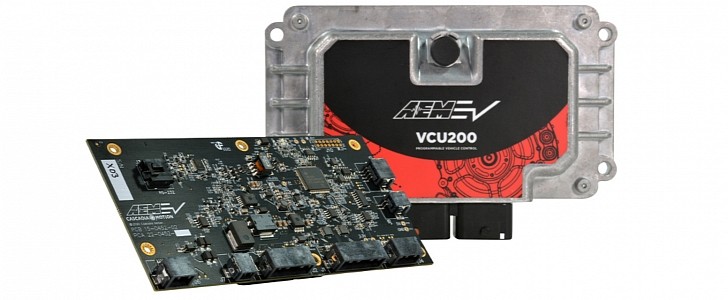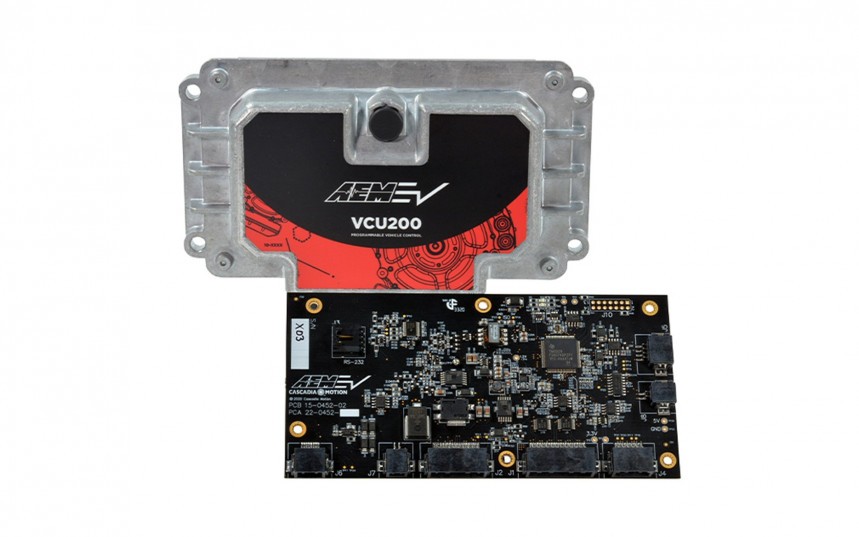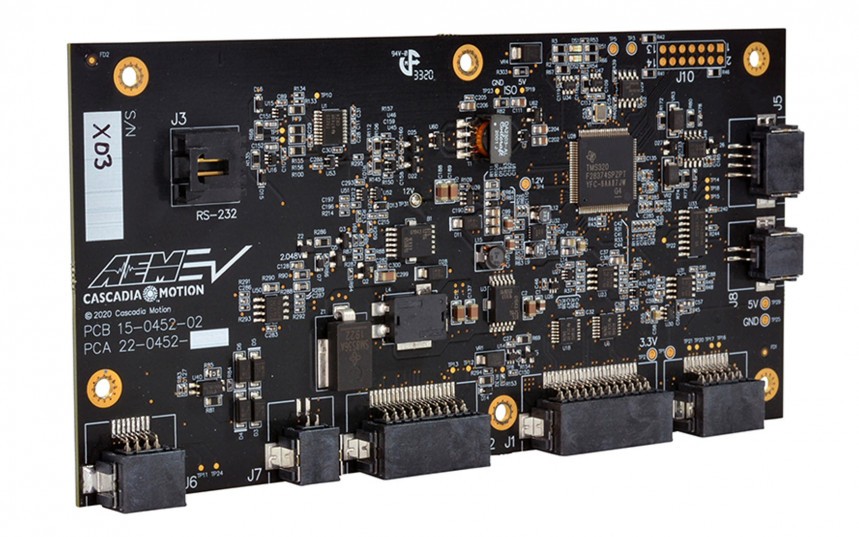The California-based performance electronics specialist has recently revealed an EV control system that will soon be available for Tesla’s Large Drive Unit (LDU) drives, increasing their overall power output by 26%. Unfortunately, it won't work on road-going Tesla vehicles, being designed for EV conversions and motorsport use.
For decades, AEM has been providing gearheads with performance upgrades ranging from custom ECUs, high-flow fuel pumps, boost controllers, and many other software and hardware solutions to increase the power of their ICE-based vehicles.
With the rapid shift towards electrification, the company created the AEM EV division, which offers EV owners a similar range of upgrades developed to safely increase performance.
Their latest creation is a new completely programable control system for Tesla LDUs comprised of an inverter control board and a VCU200 vehicle control unit.
Developed through a collaboration with Cascadia Motion, a leading manufacturer of EV drive components, this system offers OEM-level safety, vehicle control, and an increase in power.
Using the LDU inverter control board and the VCU200 eliminates factory limitations, delivering more power and full control through a system that’s been rigorously tested.
Built specifically for Tesla LDU base drives, these upgrades will increase overall horsepower by 26%, compared to the standard settings, as measured on a chassis dynamometer. The company states that further gains in output power are possible before the system’s official release, which will take place this spring.
To reach this power gain and use the added features provided by the system, the inverter control board and the VCU200 must be used together.
These features include electric motor torque management with programable torque curves dependent on the vehicle’s operating and/or driver-selectable modes, dynamic torque limitation for enhanced launch control efficiency, input customization that includes accelerator pedal, brake switch, and PRND switches. Other driver/vehicle inputs or full customizable controls of auxiliaries like cooling pumps, cooling fans, and lights are also part of the features.
The AEM EV inverter control board, which connects to the VCU200 via CAN bus, can easily replace Tesla’s OEM board within the LDU inverter. Included in the package is an adapter harness with near plug and play connectivity, excluding 12-volt power and ground connections.
For simplified power customization and integration of the VCU, the company provides its AEMcal software for free, being available to download as a full version on their official website.
This in-house developed software puts an end to the need for stacking multiple controllers to manage an EV's propulsion and ancillary systems using a simple and intuitive interface. It blends tables and graphs for customizing torque delivery, stationary and dynamic launch control, traction control, regenerative braking, speed limiting, map switching, and more.
Although many Tesla owners would love to use these upgrades to boost the power of their already capable Model S or X, AEM EV states that the control system is designed exclusively for motorsport-oriented EVs or conversions and will not work with Tesla vehicles equipped with a factory LDU.
The company will release the two products in the following months, with the inverter control board (part number: 30-8402) priced at $999 and the VCU200 control unit (part number: 30-8000) at $1,583.
With the rapid shift towards electrification, the company created the AEM EV division, which offers EV owners a similar range of upgrades developed to safely increase performance.
Their latest creation is a new completely programable control system for Tesla LDUs comprised of an inverter control board and a VCU200 vehicle control unit.
Using the LDU inverter control board and the VCU200 eliminates factory limitations, delivering more power and full control through a system that’s been rigorously tested.
Built specifically for Tesla LDU base drives, these upgrades will increase overall horsepower by 26%, compared to the standard settings, as measured on a chassis dynamometer. The company states that further gains in output power are possible before the system’s official release, which will take place this spring.
To reach this power gain and use the added features provided by the system, the inverter control board and the VCU200 must be used together.
These features include electric motor torque management with programable torque curves dependent on the vehicle’s operating and/or driver-selectable modes, dynamic torque limitation for enhanced launch control efficiency, input customization that includes accelerator pedal, brake switch, and PRND switches. Other driver/vehicle inputs or full customizable controls of auxiliaries like cooling pumps, cooling fans, and lights are also part of the features.
For simplified power customization and integration of the VCU, the company provides its AEMcal software for free, being available to download as a full version on their official website.
This in-house developed software puts an end to the need for stacking multiple controllers to manage an EV's propulsion and ancillary systems using a simple and intuitive interface. It blends tables and graphs for customizing torque delivery, stationary and dynamic launch control, traction control, regenerative braking, speed limiting, map switching, and more.
Although many Tesla owners would love to use these upgrades to boost the power of their already capable Model S or X, AEM EV states that the control system is designed exclusively for motorsport-oriented EVs or conversions and will not work with Tesla vehicles equipped with a factory LDU.
The company will release the two products in the following months, with the inverter control board (part number: 30-8402) priced at $999 and the VCU200 control unit (part number: 30-8000) at $1,583.








